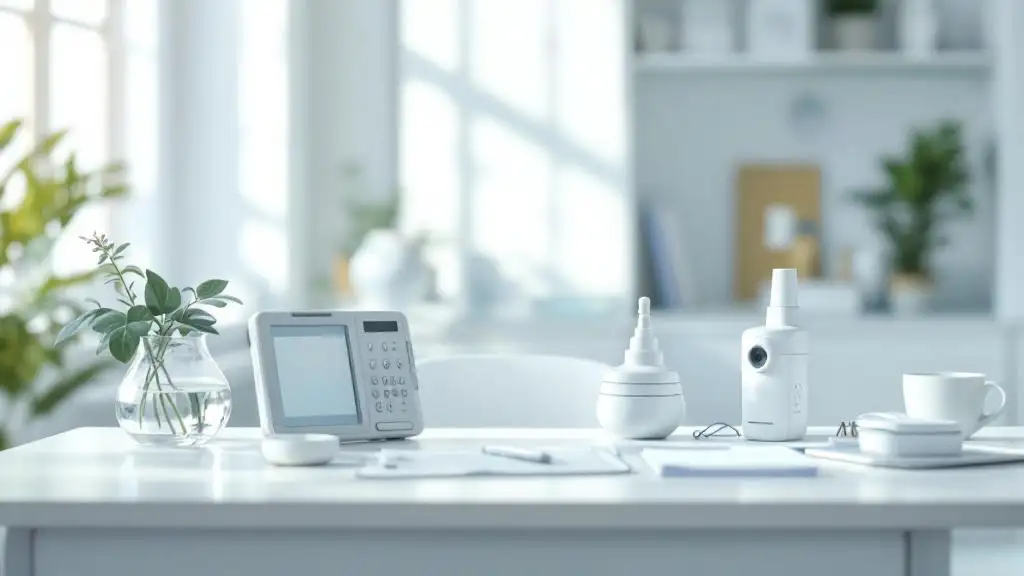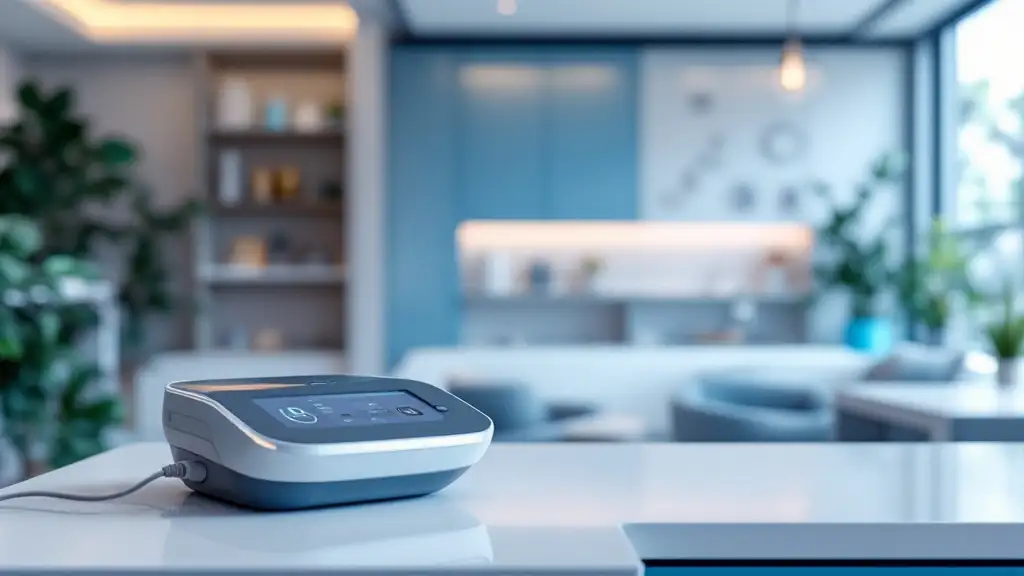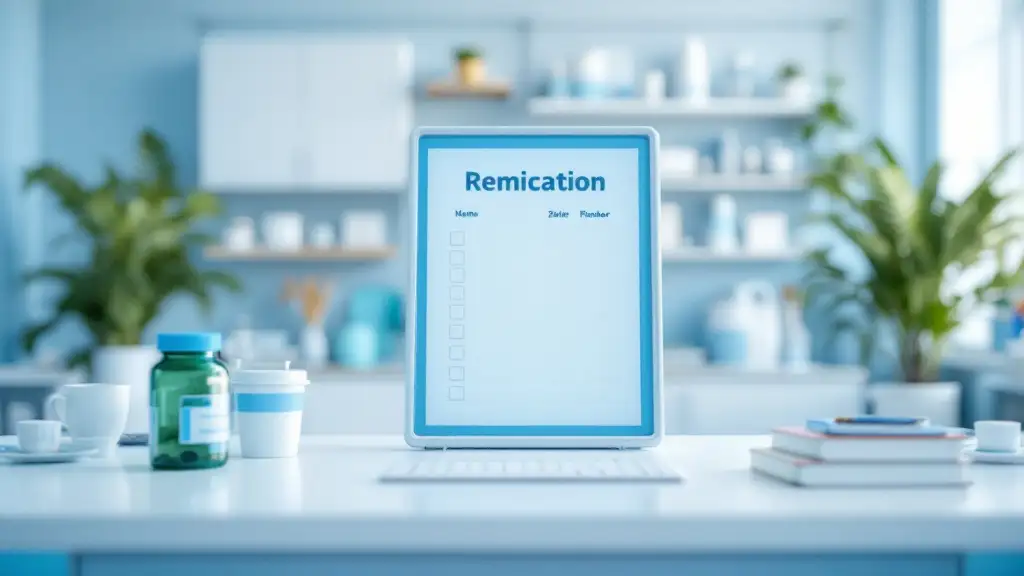An Overview of TMS Therapy Protocols
Transcranial Magnetic Stimulation (TMS) is a promising noninvasive treatment primarily used for depression and other mood disorders. Its effectiveness depends significantly on how treatments are scheduled and the duration of each session. This article explores the typical scheduling process, session lengths, and what patients can expect during their TMS therapy journey.
Scheduling TMS Sessions and Initial Assessments
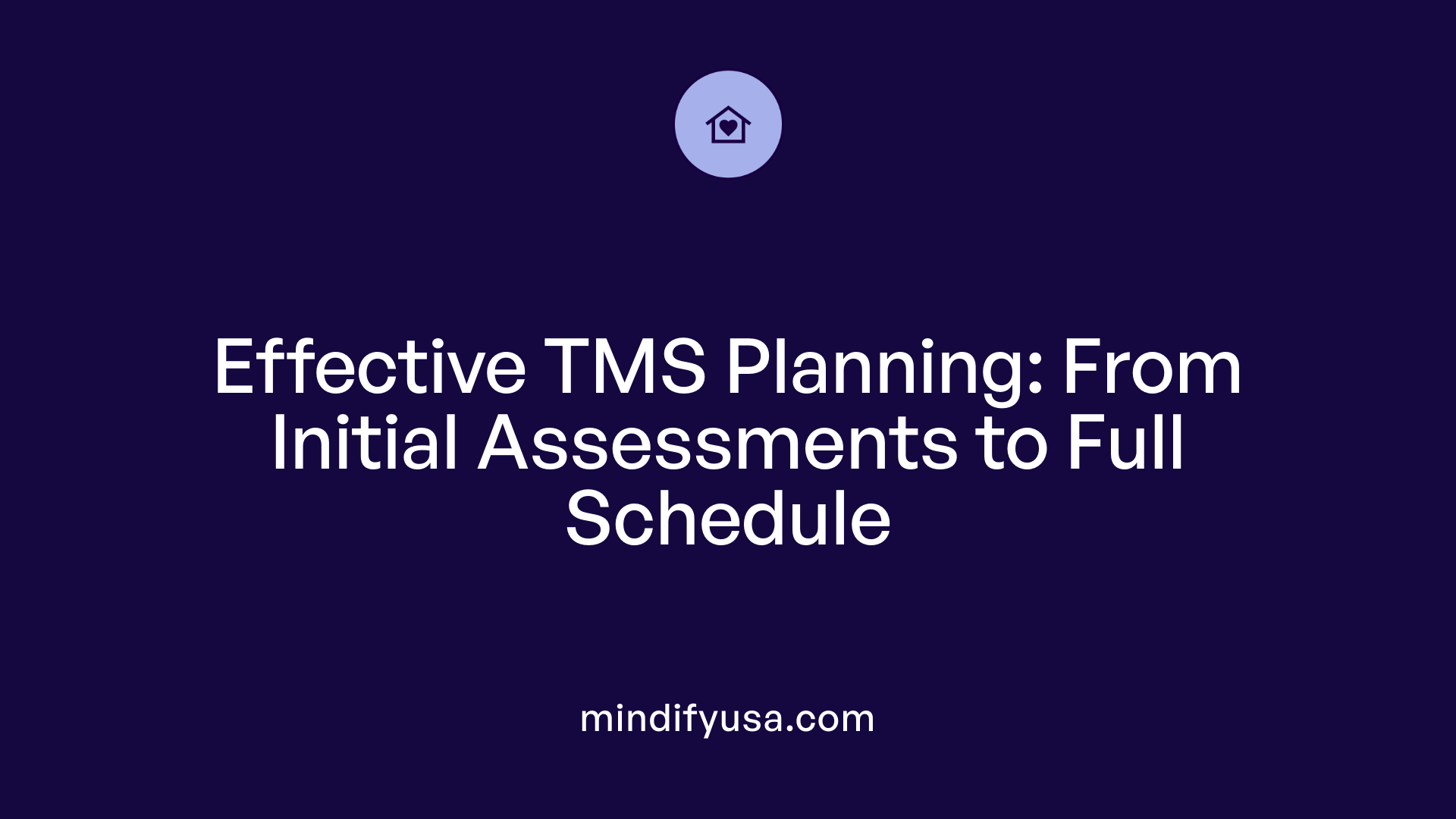
How are TMS sessions typically scheduled?
TMS sessions are generally planned after comprehensive initial assessments, including determining the patient’s brain response and treatment suitability. The process starts with the healthcare provider performing brain mapping and motor threshold testing, where the magnetic coil is placed on the scalp to identify the optimal stimulation site. This initial step helps tailor the therapy to the individual’s needs.
Once the assessments are completed, treatment sessions are scheduled. A standard session lasts about 20 to 30 minutes, and patients are typically scheduled about five days per week. The full course commonly spans four to six weeks, totaling roughly 36 sessions. These sessions are scheduled at consistent times within the week to promote steady progress. The initial appointments may involve additional time for preparation and testing, but subsequent sessions are usually shorter.
Treatment planning emphasizes flexibility, with scheduling arranged to accommodate the patient's availability while maintaining the treatment protocol. Regular follow-up appointments are set to monitor progress, adjust parameters if needed, and decide if maintenance sessions are required. This structured approach ensures that treatment adheres to best practices and maximizes efficacy.
Initial assessments before starting therapy
Before beginning TMS therapy, patients undergo detailed assessments including brain mapping and motor threshold testing. Brain mapping identifies the precise brain areas involved in mood regulation, guiding the placement of the magnetic coil.
Motor threshold testing measures the minimum magnetic intensity needed to cause a small muscle movement, helping determine the stimulation strength for therapy. This test ensures safety and effectiveness throughout the treatment course.
These evaluations are essential to customize the treatment plan specifically for each patient. They also provide a baseline to measure progress and understand individual responses. The initial assessments typically take about an hour and set the foundation for all subsequent sessions.
Logistics involved in treatment planning
Planning TMS treatment involves coordinating multiple factors including patient schedules, insurance approvals, and logistical details related to treatment duration. Most protocols involve daily treatments over five days a week, with sessions booked at convenient times to promote adherence.
Patients are often advised to set aside approximately 30 to 40 minutes for each session, which includes preparation, the magnetic stimulation, and brief recovery time. Immediate return to daily activities is usual after treatment, with no downtime required.
Follow-up visits are scheduled periodically to evaluate progress, make adjustments if necessary, and determine if booster sessions are needed to sustain benefits. Overall, effective scheduling is key to ensuring that patients complete the full course, which is critical to achieving the maximum potential relief from depression symptoms.
Duration of Individual TMS Sessions
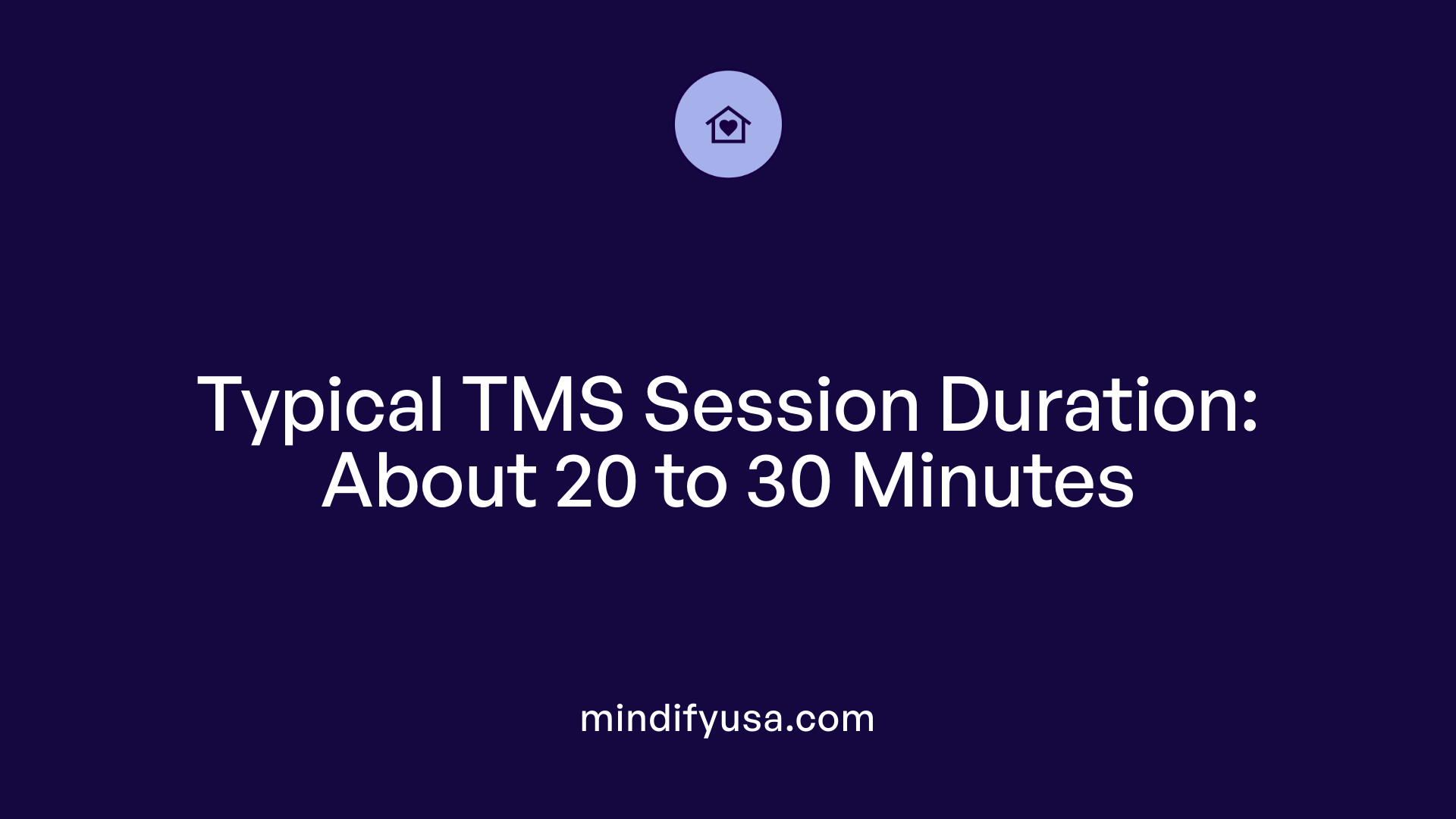
What is the typical duration of a TMS therapy session?
A standard TMS therapy session usually lasts between 20 and 40 minutes. In some instances, sessions can extend up to 50 minutes, especially when using specific protocols or devices. The overall goal is to deliver magnetic pulses to stimulate targeted brain areas involved in mood regulation effectively.
Each session involves the placement of a magnetic coil against the patient's scalp, which delivers magnetic pulses while the individual remains seated comfortably and alert. This process is generally well-tolerated, with many patients experiencing only mild sensations such as tapping under the coil, scalp discomfort, or headaches initially—symptoms that often resolve within the first week.
The frequently adopted schedule is five sessions per week over a period of four to six weeks. This regularity helps maximize treatment benefits and promote steady improvements in symptoms. While the duration of each session may vary slightly depending on individual treatment plans and the specific device used, the typical length remains around 20 to 30 minutes. In some cases, especially with different protocols or accelerated treatments, sessions might be shorter—lasting approximately 3 to 10 minutes.
In summary, the most common and practical length for TMS therapy sessions is approximately 20 to 30 minutes. This duration balances effective brain stimulation with patient comfort and convenience, making TMS a manageable outpatient procedure.
Number of Treatments Needed for Improvement
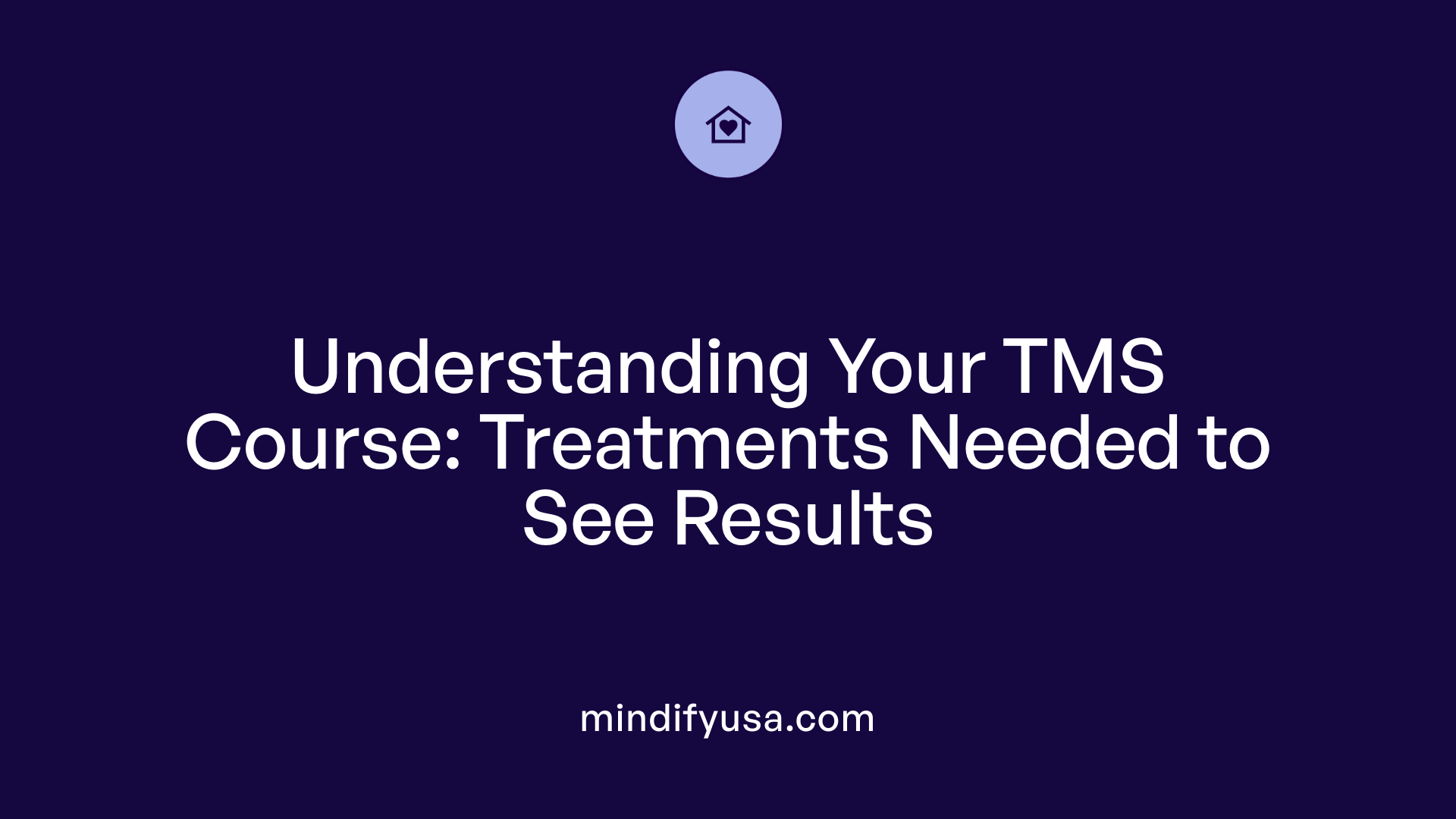
How many TMS treatments are usually needed to see improvement?
A typical TMS treatment plan involves around 36 to 37 sessions, which are administered over several weeks. Usually, patients receive five treatments each week, resulting in a full course that lasts approximately 4 to 6 weeks. Each session lasts about 20 to 50 minutes, depending on the protocol and individual adjustments.
Most patients begin to notice some signs of improvement within the first few weeks of treatment. Many experience noticeable changes around the third or fourth week, which often corresponds to roughly halfway through the entire course. Early beneficial signs include a brighter mood, improvement in daily task management, and increased energy.
The total number of sessions required can vary among individuals. While many will see significant benefits after about 18 sessions or halfway through, others might need the full 36 sessions or additional booster treatments to maintain or enhance their results. Factors influencing this include the severity of depression, individual health profile, and response to initial treatments.
To summarize, although the standard full course consists of about 36 sessions, the exact number needed for optimal improvement can differ. Patients are encouraged to complete their full treatment plan for the best possible outcome, and ongoing evaluations help tailor the process to each person's needs.
For further information, search queries like "Number of TMS treatments for depression," "full course of TMS," and "TMS treatment plan duration" provide detailed insights into typical treatment schedules and expected results.
Duration of TMS Effects and Maintenance Treatments
How long does the effect of TMS last after treatment?
The longevity of TMS treatment benefits varies from person to person. Many patients begin to notice symptom improvements within a few weeks, with some experiencing positive changes as early as two weeks into therapy. For responders, these effects can last several months, and in some cases, more than a year.
Research shows that over half of the patients remain symptom-free one year after completing their TMS treatments. However, there are instances of relapse, typically around 7 weeks post-treatment, although the overall relapse rate during follow-up is relatively low at approximately 13.5%. This indicates that while many see extended relief, some may experience a return of symptoms sooner.
To maintain the benefits gained from TMS, some patients undergo routine maintenance sessions. These are often scheduled weekly for a few months following the initial course. Maintenance TMS helps prevent relapse and sustain improvements, especially in individuals prone to recurrent depression.
Factors influencing the long-term effects include the severity of depression, duration of the condition before treatment, individual brain response, and adherence to follow-up care. Tailored treatment plans, including booster sessions, can support ongoing remission.
Overall, although TMS has the potential for lasting benefits, ongoing treatments or booster sessions are sometimes necessary to keep symptoms at bay, making personalized follow-up essential for optimal long-term outcomes.
Weekly Scheduling and Flexibility in TMS Treatment

Does TMS have to be administered five days a week, and what is the typical treatment schedule?
Standard TMS treatment usually involves administering therapy five days a week, typically from Monday to Friday. This schedule is designed to deliver consistent magnetic stimulation over the course of about 4 to 6 weeks, totaling around 30 to 36 sessions. Each session generally lasts between 20 to 50 minutes, including setup and breaks.
This intensive weekday schedule is preferred because it helps build steady progress in symptom relief. The full course aims to maximize the therapeutic effects of TMS, with most patients starting to notice improvements by the third or fourth week.
However, the exact schedule can sometimes be adjusted based on individual needs and responses. Some treatment plans might involve slightly fewer sessions per week or adjusted timing to accommodate personal or health factors.
After completing the initial treatment series, many patients require maintenance sessions. These are scheduled less frequently, often spaced out from weekly to monthly, to help sustain the benefits achieved.
While completing the full course on the standard schedule is generally recommended for optimal results, small modifications can be made with medical approval. Flexibility exists to tailor treatment to individual lifestyles while maintaining effectiveness.
Additional Aspects of TMS Scheduling and Session Management
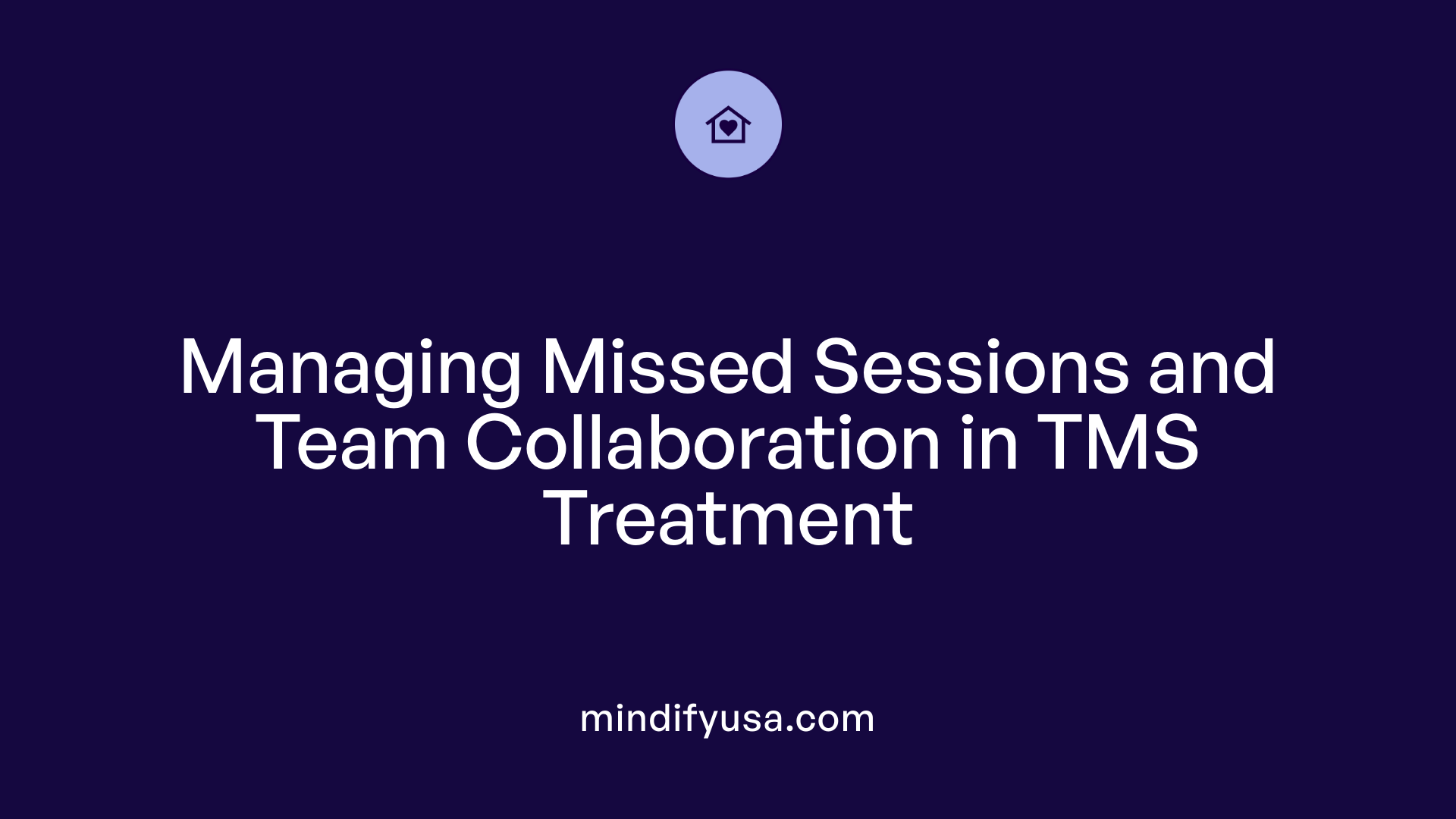
How is the schedule for TMS treatment determined and managed?
Scheduling TMS treatments involves a close collaboration between the patient and a team of healthcare professionals, including psychiatrists, technicians, and administrative staff. Initially, the patient undergoes an assessment, including brain mapping and motor threshold determination, to identify the targeted brain region and establish stimulation parameters.
After this setup, the treatment plan is formulated, typically involving five sessions per week over four to six weeks. Sessions are usually scheduled on weekdays, with flexibility to adapt to the patient’s needs and lifestyle.
The sessions are generally booked for about 20 to 40 minutes each and are spaced throughout the week to maximize efficacy. Treatment providers often include days for monitoring progress and making necessary adjustments.
How are missed TMS sessions handled?
Missed sessions are common, and in most cases, do not significantly impact treatment outcomes if rescheduled within a reasonable period, often up to two weeks. Patients are encouraged to inform their healthcare team as soon as possible to coordinate rescheduling.
Even with gaps, the overall effectiveness remains relatively stable, especially if the full course — typically 20 to 36 sessions — is completed. Routine follow-ups help determine whether additional booster sessions are necessary after the initial treatment.
Who is involved in scheduling and administering TMS?
The process involves a dedicated team of trained professionals, including:
- Psychiatrists: Oversee treatment plans, monitor progress, and make adjustments.
- Technicians: Handle the setup, brain mapping, and operation of TMS devices.
- Nurse clinicians and support staff: Assist with patient care, education, and scheduling.
- Administrative staff: Coordinate appointments and manage the treatment schedule.
This collaborative approach ensures the treatment is personalized, flexible, and effectively managed throughout the session course.
Maximizing the Benefits of TMS Therapy
Understanding how TMS sessions are scheduled and their duration can help patients better prepare for treatment and adhere to the protocol for optimal outcomes. Whether following a traditional 6-week schedule or an accelerated protocol, consistent participation is key. With flexible scheduling and thorough monitoring, TMS offers a promising path toward mood recovery and sustained mental health. Patients are encouraged to collaborate closely with their healthcare team to tailor the schedule to their specific needs and lifestyle, ensuring the best possible results from their treatment course.
References
- When Does TMS Start Working and Does It Last? | PrairieCare
- How Long Does It Take for TMS to Work? - Cognitive FX
- The Number of Sessions for TMS Depression Therapy
- How Many TMS Sessions Are Needed? - GIA Miami
- How long is a typical TMS appointment? | United States - TMS therapy
- Understanding the TMS Therapy Timeline | Your Course of Treatment
- Thinking About TMS? Here's What I Tell My Patients
- TMS Frequently Asked Questions - Butler Hospital











